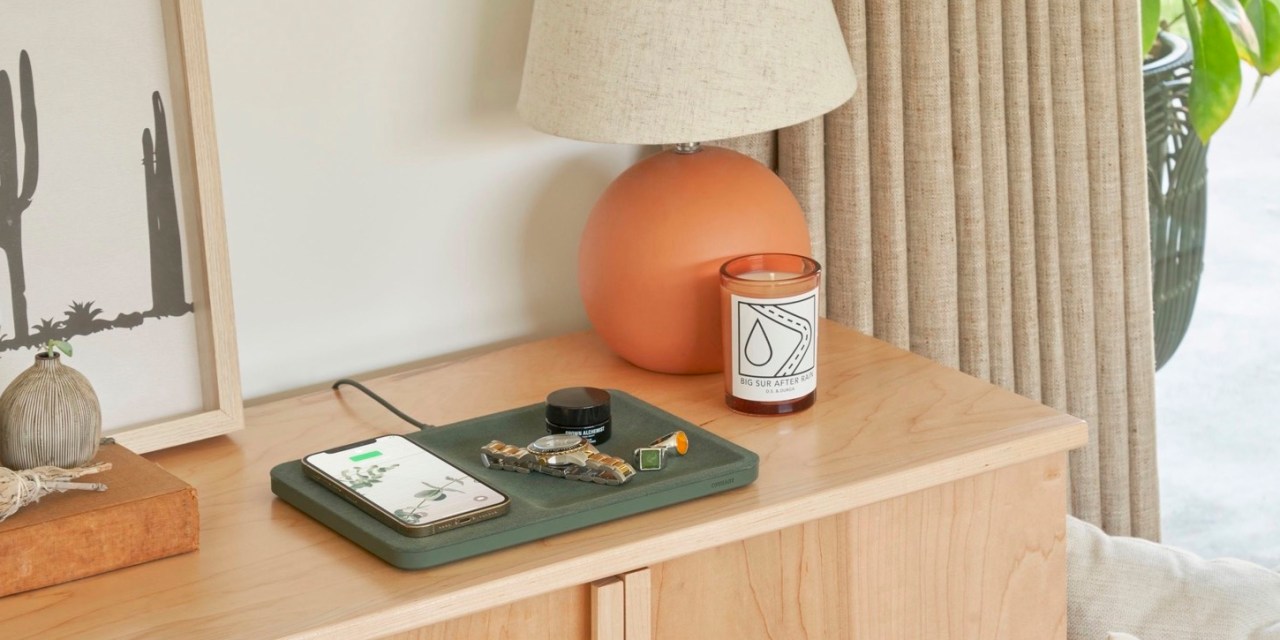How Courant plans and markets seasonal holiday products

Courant, a wireless charging brand founded in 2018 that specializes in home and office tech accessories, makes more than half of its yearly revenue in the last four months of the year. The company says it has reached profitability thanks to the way it harnesses this annual spike. But as such, Courant has been figuring out its marketing and forecasting strategy to handle the yearly holiday sales onslaught.
The company brought in over $10 million in revenue in 2021, and is on track to grow 100% year-over-year in 2022. While moving large volumes of products in a few short weeks is great for business, seasonality also presents challenges for a brand like Courant. But Courant said it has coalesced on a year-round strategy that best supports its holidays-heavy sales calendar.
The majority of the strategy is focused on ensuring existing and new inventory arrives on time. All while heavily marketing to people throughout the first half of the year, knowing that these customers are waiting to make their purchases at the end of the year. Here’s a deep dive into Courant’s business schema.
The challenges of inventory planning
“We never built the company to be a seasonal business,” Courant co-founder Monish Sabnani said. “But because we launched during Q4 of 2018, we immediately experienced momentum building around the holidays.”
For example, the brand’s flagship charging tray featured on Oprah’s Favorite Things list a few weeks after launching that year. “Since then, we’ve seen similar spikes when we’re featured on big gift guides around holidays,” Sabnani said. “So over the years, we have leaned into this pattern by planning product releases and marketing campaigns around it.”
Courant has a big wholesale presence, currently selling at retailers like Target, Bed Bath & Beyond and West Elm, among others. However, its direct-to-consumer website is still the company’s biggest channel during the holiday season.
Co-founder Evan Moskal said that it takes the team all year to plan for the onslaught of holiday sales, especially amid supply chain strains during the past couple of years. To continue running the business profitably, there are a number of inventory planning steps the company has to adhere to throughout the year to ensure enough merchandise is available during the holiday rush.
This entails making sure inventory arrives by October or early November. To do this, Moskal said the company places orders throughout the summer to help stagger shipments. “There are so many different components and materials to our products, so it takes a while to assemble and package,” Moskal added.
Ad position: web_incontent_pos1
“To execute a successful fourth quarter, it’s a matter of being organized and in constant communication with suppliers throughout the year,” Moskal said. This isn’t just to fulfill the direct-to-consumer orders, but also ensure retailers and B-to-B customers like hospitality groups and corporate gifting customers receive their orders on time.
Building a year-round marketing funnel
Over the years, the Courant team learned that it’s never too early to start targeting holiday DTC customers.
“We’ve found our customers are price sensitive because the category is so commoditized,” Sabnani explained. “So it’s important to fill our top and middle funnel with more people throughout the year.” At the end, he said, discounts are what tend to move the needle for people who are waiting for promos. “So we find and retarget this cohort until they pull the trigger at the end of year,” Sabnani said.
“To be able to retarget customers during the noisy end-of-year period, we try to do most of our customer acquisition from January through September,” Sabnani said. This strategy is sometimes a risk when it comes to conversion rates. But Sabnani said that given the products’ big gifting nature, many of Courant’s new customers don’t convert until they receive the end of year promotions. Alongside email campaigns, Courant uses Facebook, Google and TikTok to acquire customers and introduce them to the brand before the fourth quarter rolls around.
But organic marketing is still its biggest marketing investment.
“For us, PR is one of the most important strategies,” Sabnani said. Product guides, reviews and holiday gift roundups, in particular, are important to the business. So the company ramps up affiliates and PR to help land its chargers on a mix of national and niche guides while people are still window shopping, Sabnani said. “These range from big ones like the annual Goop gift guide, to more SEO-friendly lists like ‘top gifts for your boss’,” he said.
Ad position: web_incontent_pos2
Sabnani said the company’s paid ad spend has ebbed and flowed since changes like iOS 14 have rolled out. With this, Courant has had to boost the more effective channels, like organic brand outreach and SEO budgets, to offset the drop in traffic.
Courant also creates and rolls out its own visual gift guides to help direct customers to products based on their price points, discounted bundles, free monogramming with a minimum purchase, etc.
Diane Wehrle, marketing and insights director of retail insights provider Springboard, said that seasonal-specific businesses have always faced difficulties in staying on customers’ minds. The trend especially impacts food and beverage brands, as seasonal products like rosé wine have shown.
For online brands, they also have the added obstacle of a full return in brick-and-mortar traffic this holiday season, Wehrle said. “And with added costs from inflation, this year it’s been even more difficult for these retailers to predict demand and market merchandise accordingly.”
Indeed, running a seasonal business poses a series of obstacles alongside the yearly spike in sales.
“This means we forecast and re-forecast demand a lot,” Sabnani said. He confirmed that due to the unpredictability of the past couple of years, e-commerce brands like Courant are having to update comp sales on a monthly basis.
“We try to drive home that our chargers’ design and function are a safe bet to gift,” he said. “Whether it’s on their desk or a nightstand, they’ll end up using it.”

